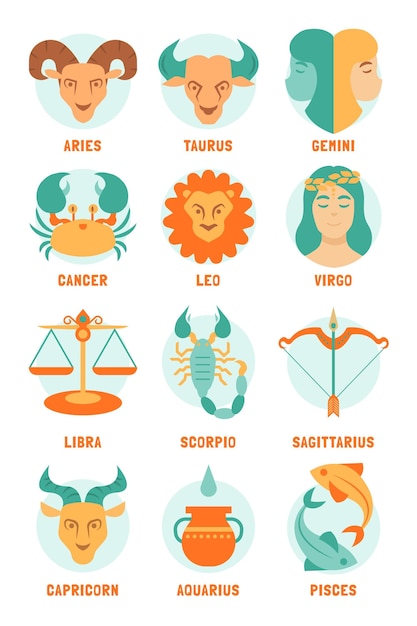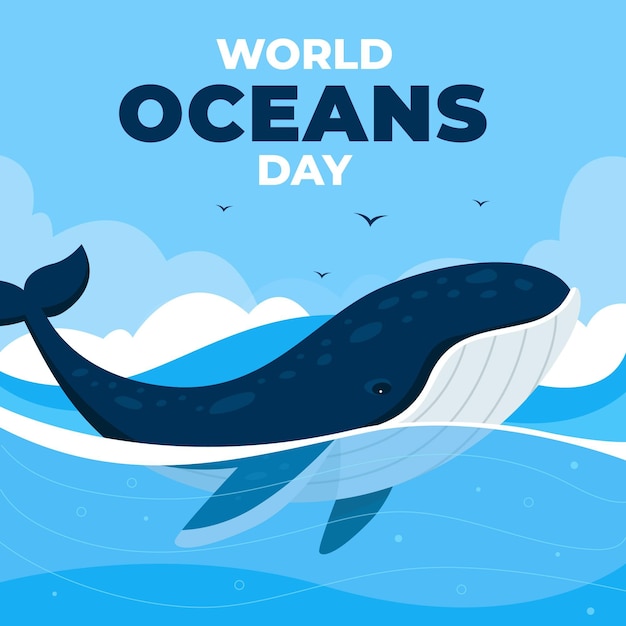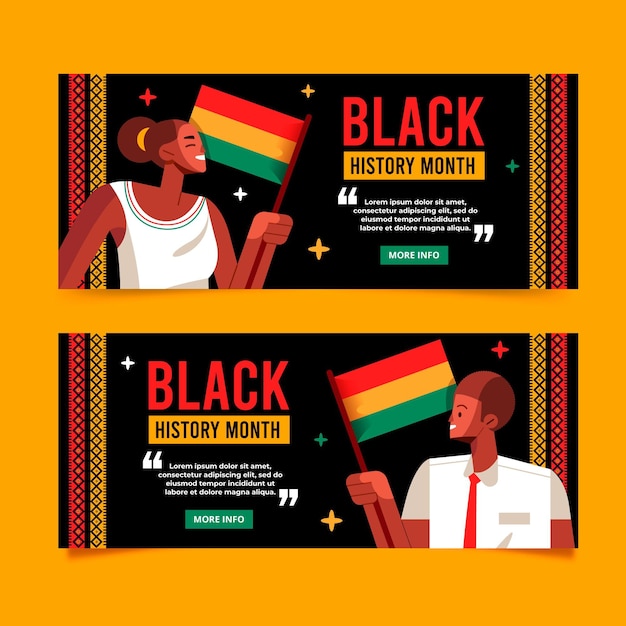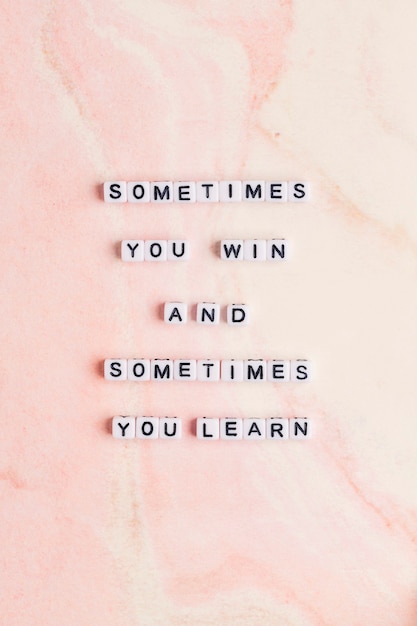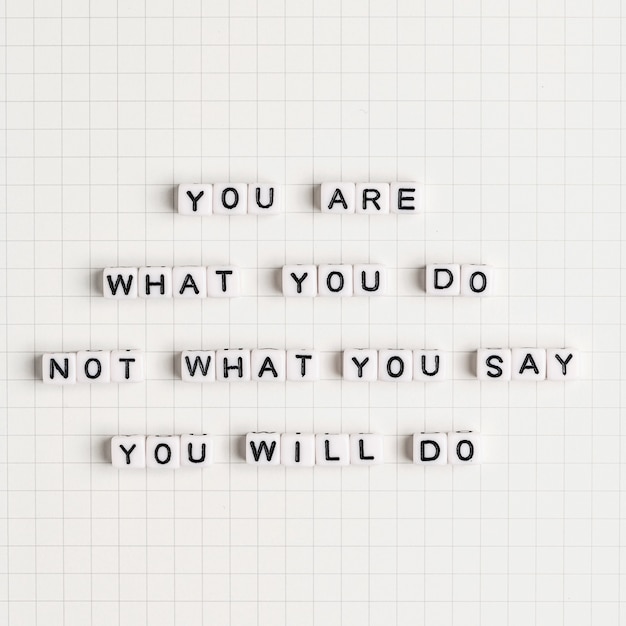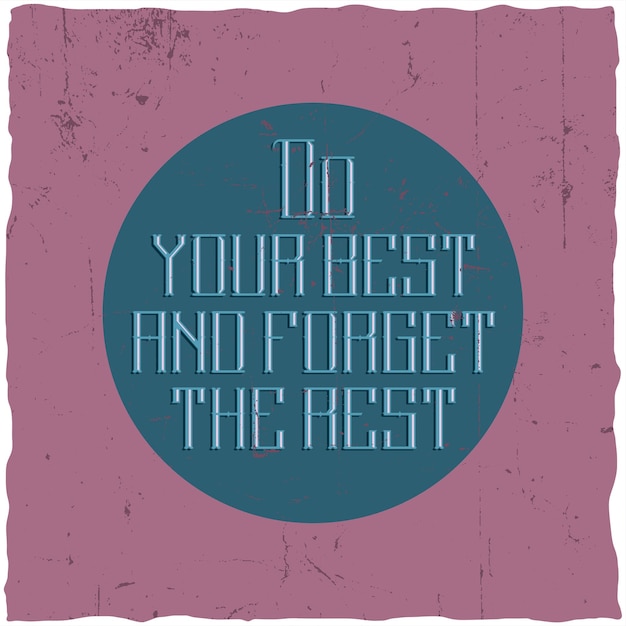Fascinating Facts About Cobras
Cobras are venomous snakes found in various parts of the world.
The king cobra is the longest venomous snake, reaching up to 18 feet in length.
Cobras have a characteristic hood, which they raise when threatened.
Cobras are known for their distinctive hissing sound.
The venom of cobras can be deadly to humans if not treated immediately.
Cobras are expert hunters, particularly in the dark.
Cobras primarily feed on rodents, birds, and other small animals.
Cobras have excellent vision and can detect movement from a considerable distance.
Cobras are highly adaptable and can survive in a variety of habitats, including forests, deserts, and grasslands.
Cobras play an important role in maintaining the ecosystem by controlling rodent populations.
Cobras have been revered and feared in several cultures throughout history.
The venom of cobras has been used in some traditional medicines.
Cobras are known for their unique ability to glide across water surfaces, enabling them to swim efficiently.
The venom of certain cobras contains neurotoxins that paralyze their prey.
Cobras have a lifespan of around 20 years in the wild.
Cobras have a strong association with ancient Egyptian civilization, often depicted in hieroglyphs and sculptures.
The Indian cobra is one of the most widely recognized species.
The venom of cobras affects the nervous system, causing paralysis and respiratory failure.
Cobras undergo a process called ecdysis, where they shed their skin periodically.
The spitting cobra has the unique ability to project its venom accurately at a target’s eyes.
Cobras have a specialized venom delivery system called hollow fangs.
Cobras are capable of rearing up a third of their body length when threatened.
Cobras are solitary reptiles and prefer to avoid encounters with humans.
The hood of a cobra is made up of elongated ribs and skin.
Cobras are known to be highly intelligent snakes.
The king cobra can raise its body to a height of six feet when threatened.
Cobras have heat-sensitive pits on their faces, allowing them to detect prey even in the dark.
Cobras exhibit unique mating rituals, including courtship dances and territorial displays.
Cobras are cold-blooded creatures, relying on external sources of heat to regulate their body temperature.
Cobras are excellent climbers and can scale trees and walls effortlessly.
The venom of cobras has the potential for medical research, including pain management and drug development.
The spectacled cobra gets its name from the spectacled pattern on the hood.
Cobras can go for several months without eating, surviving on their fat reserves.
The black mamba is the fastest snake in the world, known for its incredible speed and agility.
Cobras have been featured prominently in mythology and folklore worldwide for centuries.
Cobras can strike with extreme accuracy and speed, often delivering fatal bites.
Cobras have retractable fangs, which they fold back against the roof of their mouth.
Certain species of cobras, like the Egyptian cobra, can spray venom as a defensive mechanism.
Cobras have a reputation as being majestic and mysterious creatures.
The venom of cobras contains enzymes that break down tissues and initiate digestion of prey.
Cobras are known to exhibit aggressive behavior when they feel threatened.
The venom of cobras is being researched for potential use in cancer treatments.
Cobras molt their skin several times per year, allowing for growth and healing of injuries.
Cobras have a lifespan of around 25 years in captivity.
The bite of a cobra should be treated as a medical emergency, requiring immediate professional attention.
Fascinating Facts about Birds
Birds have hollow bones, making them lightweight and enabling them to fly.
The ostrich is the largest bird in the world and cannot fly.
Penguins are birds that cannot fly but are excellent swimmers.
The hummingbird is the smallest bird in the world and can fly backwards.
Birds have feathers that help them regulate their body temperature and facilitate flight.
The albatross has the longest wingspan of any bird, reaching up to 11.5 feet.
Birds have a highly developed respiratory system, allowing them to extract more oxygen from the air than mammals.
Falcons are known for their exceptional speed and are considered some of the fastest birds in the world.
Some species of birds, such as crows and parrots, are known for their ability to mimic human speech.
Birds have excellent eyesight, often much better than humans, allowing them to spot prey from great distances.
Ducks have a unique feature called the lip at the edge of their beaks, which allows them to filter out water and retain food.
Birds play a crucial role in pollination by spreading pollen from flower to flower as they feed.
The kiwi bird, native to New Zealand, is flightless, has hair-like feathers, and lays the largest eggs relative to its body size.
Many bird species migrate thousands of miles each year to find better food sources and breeding grounds.
Bald eagles are known for their impressive hunting skills and can dive at speeds of up to 100 miles per hour.
Birds have zygodactyl feet, which means their toes are arranged in a pattern with two pointing forward and two pointing backward.
The weight of a bird’s brain is relatively large compared to its body weight, indicating their high cognitive abilities.
The toucan’s large and colorful beak is primarily used for attracting mates and regulating its body temperature.
The African grey parrot is considered one of the most intelligent bird species and can learn a wide vocabulary of words and phrases.
Some bird species, such as cormorants, have evolved the ability to dive into water and swim underwater to catch fish.
The Northern cardinal is known for its beautiful red plumage and distinctive song.
Birds have a specialized organ called the gizzard, which helps them grind and digest tough food like seeds and insects.
Many bird species engage in elaborate courtship rituals to attract mates, including unique dances and displays of feathers.
The peregrine falcon is the fastest bird in level flight, reaching speeds of over 240 miles per hour during hunting dives.
The lyrebird is known for its ability to mimic a wide variety of sounds, including other bird calls, human voices, and even car alarms.
Birds are descendants of dinosaurs and share several characteristics with their ancient ancestors.
The honeyguide bird leads humans and other animals to beehives, signaling them with specific calls in exchange for a share of the honey.
Some bird species, like the blackbird, can recognize themselves in mirrors, demonstrating a level of self-awareness.
The puffin is an expert diver and can swim underwater to catch fish in deep waters.
Many bird species engage in communal roosting, gathering in large numbers to rest and sleep together.
The flamingo’s pink coloration comes from their diet, which consists mainly of shrimp and other organisms rich in pigments.
The male bowerbird builds elaborate structures, called bowers, to attract females, decorating them with colorful objects.
Birds have a highly developed sense of hearing, allowing them to detect sounds at various frequencies.
The hornbill bird has a unique casque on its beak, which helps amplify its calls and serves as a display during courtship.
Some bird species, like the American goldfinch, undergo a complete change in plumage during breeding season, called molting.
Birds have a third eyelid, called the nictitating membrane, which provides additional protection for their eyes while flying.
The peacock has an elaborate plumage display, fanning out its tail feathers to attract females.
Many bird species, such as pigeons and homing pigeons, have a remarkable ability to navigate and find their way back to their homes over long distances.
Birds have a highly efficient circulatory system, allowing them to withstand the physical demands of flight.
The tawny frogmouth, native to Australia, has excellent camouflage, resembling a broken branch during the day.
Some bird species, like the African jacana, have evolved an unusual mating system called polyandry, where females mate with multiple males who then care for the eggs and offspring.
Birds have an exceptional sense of balance, allowing them to perch on branches or walk on narrow surfaces with ease.
The hoopoe bird has a distinct crown of feathers on its head, which can be raised and lowered as part of its courtship display.
Birds, like robins, have a keen sense of geomagnetic fields, helping them navigate during migrations.
The Australian lyrebird is known for its remarkable ability to mimic not only other bird calls but also sounds from the environment, such as chainsaws and camera shutters.
Interesting Facts About Beluga Whales
Beluga whales are known for their distinctive white color, which sets them apart from other whale species.
Belugas are highly social creatures, often traveling in groups called pods.
These majestic creatures are found in Arctic and sub-Arctic waters, including the coasts of Russia, Alaska, and Canada.
Beluga whales are known for their flexibility and ability to twist and turn their bodies, making them highly maneuverable in the water.
Belugas have a unique vocalization system and are often referred to as the canaries of the sea due to their melodic calls.
Beluga whales are incredibly intelligent and are known for their problem-solving abilities.
The average lifespan of a beluga whale is 35-50 years, although some individuals have been known to live up to 60 years.
Belugas have a layer of blubber that helps to keep them warm in the frigid Arctic waters.
These whales are known for their playful nature and can often be seen breaching and performing acrobatic displays.
Belugas have a bulbous forehead, known as a melon, which helps with echolocation and communication.
These whales are carnivorous, feeding on fish, squid, and crustaceans found in their habitats.
The gestation period for beluga whales is around 14-15 months, one of the longest for any mammal.
Belugas have a unique ability to change the shape of their vocalizations, allowing them to mimic various sounds and even human speech.
These whales have a flexible neck, which enables them to move their heads in different directions to scan their surroundings.
Beluga whales have a thick layer of fat, allowing them to store energy and survive in areas where food may be scarce.
These whales migrate to warmer waters during the summer months, often traveling long distances to find suitable feeding grounds.
Belugas are known to be curious animals and have been known to interact with humans, approaching boats and divers.
These whales have a well-developed sense of hearing, which helps them navigate and communicate in their often murky underwater environments.
Belugas have a small dorsal fin compared to other whale species, which allows them to swim under ice and navigate in shallow waters.
These whales have a lifespan similar to that of humans, and each beluga has its own unique personality and behavior patterns.
Belugas are known for their ability to swim backward, a skill not commonly observed in other whale species.
These whales are highly adaptable and have been known to survive in captivity, making them popular attractions in marine parks and aquariums.
Beluga whales have a mottled pink or purplish color when they are born, gradually changing to white as they mature.
These whales have a flexible neck, which enables them to turn their heads vertically and feed on prey near the surface of the water.
Belugas have a layer of blubber that not only helps with insulation but also acts as a buoyancy aid, allowing them to stay afloat easily.
These whales are known to dive to impressive depths of up to 700 meters in search of food.
Beluga whales have a robust immune system, enabling them to survive in extreme Arctic conditions and resist diseases.
These intelligent creatures can recognize themselves in mirrors, a sign of self-awareness and advanced cognitive abilities.
Belugas have a specialized bump on their head called a melon, which aids in echolocation and communication.
These whales have a varied diet, including species such as salmon, herring, cod, and even small crustaceans.
Beluga whales are known for their strong maternal instincts, with mothers caring for their calves for up to two years.
These whales are capable of producing a wide range of vocalizations, including clicks, whistles, and squawks.
Belugas have a streamlined body shape, which allows them to move swiftly through the water, reaching speeds up to 15 mph.
These whales have a preference for shallow coastal waters but can also be found in deeper offshore areas.
Beluga whales have a layer of blubber up to 4 inches thick, which helps to insulate them in the frigid Arctic waters.
These whales have a flexible neck, allowing them to tilt their heads to the side while swimming and hunting.
Belugas are known to form strong social bonds within their pods, often cooperating during hunting and protecting each other from predators.
These whales have a unique adaptation called a dorsal ridge, which helps them swim powerfully through the water.
Belugas communicate through a combination of vocalizations, body movements, and facial expressions.
These whales have a playful nature, often engaging in games such as keep away with objects they find in the water.
Beluga whales are able to move their facial muscles, giving them the ability to smile and express different emotions.
These unique creatures have a specialized blowhole that allows them to exhale sharply, creating a distinctive spray of water in the air.
Belugas have a diverse range of hunting techniques, including cooperative hunting, stunning prey with tail slaps, and blowing bubbles to herd fish.
These whales can live in a wide range of water salinities, from freshwater river estuaries to saltwater environments, thanks to their adaptability.
Beluga whales are highly migratory and have been recorded traveling over 4,000 miles in a single season, making them one of the most impressive travelers in the animal kingdom.
Aries Facts – Everything You Need to Know About this Fiery Zodiac Sign
Aries are known for their fiery and passionate nature.
Aries love a good challenge and thrive on competition.
Aries are natural-born leaders and are often found in positions of authority.
Aries have a strong sense of independence and don’t like to be controlled.
Aries are known for their impulsive nature and can act on instinct without thinking things through.
Aries are incredibly loyal and will always stand up for their loved ones.
Aries are quick thinkers and can come up with creative solutions to problems.
Aries have a strong sense of justice and will fight for what they believe in.
Aries are natural-born adventurers and love to explore new horizons.
Aries have a magnetic personality that draws others towards them.
Aries are known for their optimism and positive outlook on life.
Aries have a strong intuition and can often sense things before they happen.
Aries are fiercely independent and don’t like to rely on others.
Aries are natural-born risk-takers and aren’t afraid to take chances.
Aries are known for their strong communication skills and can be persuasive in their arguments.
Aries have a competitive nature and enjoy participating in sports or other activities that allow them to showcase their skills.
Aries have a natural charm that makes them incredibly charismatic.
Aries are known for their determination and willpower to achieve their goals.
Aries have a strong sense of self and are confident in who they are.
Aries are known for their quick tempers and can be easily provoked.
Aries are incredibly passionate in everything they do, whether it’s work or love.
Aries have a strong sense of adventure and are always up for trying something new.
Aries love to be the center of attention and thrive in social situations.
Aries are natural-born problem solvers and can think outside the box.
Aries are known for their honesty and directness, sometimes to a fault.
Aries have a strong sense of loyalty and will always be there for their friends and family.
Aries have a strong sense of justice and will fight for what they believe is right.
Aries are known for their independence and don’t like to be tied down.
Aries have a magnetic personality that attracts others to them.
Aries are always up for a challenge and enjoy pushing themselves to their limits.
Aries have a strong sense of self and don’t rely on others for validation.
Aries have a contagious enthusiasm that can inspire others to join in their pursuits.
Aries are known for their fiery passion in romantic relationships.
Aries are natural-born leaders and excel in positions of authority.
Aries have a strong sense of intuition and can often sense when something is off.
Aries have a quick wit and can come up with clever comebacks on the spot.
Aries have a natural charisma that makes them the life of the party.
Aries have a strong sense of justice and will always fight for what they believe is right.
Aries have an adventurous spirit that leads them to explore new places and try new things.
Aries are known for their determination and drive to succeed in whatever they do.
Aries have a magnetic personality that draws others towards them.
Aries have a strong sense of self and don’t easily conform to societal norms.
Aries have a fiery and passionate love life that is never dull.
Aries have a strong willpower and can overcome any obstacle that comes their way.
Aries are natural-born leaders and are not afraid to take charge in any situation.
Discover the Fascinating Fun Facts about Japan
Japan is known for having more than 6,800 islands.
The official name of Japan is Nippon or Nihon, which means origin of the sun.
Sumo wrestling is Japan’s national sport.
Tokyo, the capital of Japan, is the most populous city in the world.
Japan has the highest number of vending machines per capita.
The Japanese word for a cherry blossom is sakura.
Japan experiences over 1,500 earthquakes every year.
The average life expectancy in Japan is 84 years, one of the highest in the world.
Japan is home to the world’s first novel, The Tale of Genji, written in the 11th century.
Karaoke is a popular activity in Japan, with more than 100,000 karaoke bars across the country.
The bullet trains in Japan can reach speeds of up to 320 kilometers per hour.
The Japanese art of paper folding is called origami.
Japan is known for its unique and colorful vending machines, which sell everything from hot meals to underwear.
Bathing in hot springs, known as onsen, is a popular pastime in Japan.
The Japanese cuisine is rich in seafood and rice dishes, such as sushi and ramen.
Japan has a cat island, called Tashirojima, where cats outnumber humans.
The Tokyo Skytree is the tallest tower in the world, standing at 634 meters.
Japan has 21 World Heritage Sites, including temples, castles, and natural landmarks.
The Japanese tradition of Hanami involves picnicking under cherry blossom trees.
Japan’s Mount Fuji is an active volcano and the highest peak in the country.
The invention of instant noodles is attributed to a Japanese man named Momofuku Ando.
The Japanese writing system consists of three scripts: Hiragana, Katakana, and Kanji.
Japan has the second-highest number of three-star Michelin restaurants in the world, after France.
The famous video game characters Mario and Pokemon were created in Japan.
Japanese baseball is a popular sport, with teams often followed with great enthusiasm.
Japan has more than 200 castles, including Himeji Castle, a UNESCO World Heritage Site.
The Japanese believe in various superstitions, such as the number 4 being considered unlucky.
Mount Fuji has inspired countless artists and is depicted in numerous paintings and prints.
Japan is home to the world’s busiest pedestrian intersection, the Shibuya Crossing.
Kyoto was the capital of Japan for over 1,000 years and is known for its traditional temples and gardens.
Japan has over 1,500 species of fish, making it a paradise for seafood lovers.
Pachinko, a popular Japanese arcade game, is often regarded as a gambling activity.
Japan’s Shinkansen, or bullet train, has a near-perfect safety record since its inception in 1964.
The vending machines in Japan not only sell drinks but also items like fresh eggs and umbrellas.
Japan is known for its efficient public transportation system, including trains and buses.
The Japanese alphabet consists of 46 characters.
Japan is famous for its intricate and delicate traditional pottery, such as the blue-and-white Arita ware.
The island of Okinawa in Japan has one of the highest concentrations of centenarians in the world.
Japan is the birthplace of karate, a popular martial art that focuses on striking techniques.
Many vending machines in Japan offer hot drinks, such as coffee and tea, even in colder months.
The Japanese have a unique way of expressing gratitude by bowing, which varies depending on the situation and degree of thanks.
Japan is known for its efficient and reliable train system, which is rarely late.
The Jigokudani Monkey Park in Japan allows visitors to observe wild monkeys bathing in hot springs during the winter.
Japan introduced emoji, which became popular globally and are now used in various digital communication platforms.
The annual cherry blossom season, known as hanami, attracts millions of tourists from all over the world to Japan.
Interesting Facts About Blue Whales
Blue whales are the largest animals to have ever existed on Earth.
The heart of a blue whale is so big that a human could swim through its arteries.
Blue whales can grow up to 100 feet long, which is about the length of three school buses.
These majestic creatures can weigh as much as 200 tons, equivalent to 33 African elephants.
Blue whales are known for their distinctive blue-gray color, hence their name.
Despite their enormous size, these gentle giants primarily feed on tiny shrimp-like animals called krill.
Each day, a blue whale can consume up to 4 tons of krill, which is roughly equivalent to 40,000 hamburgers.
Blue whales have baleen plates in their mouths that act as a filter, allowing them to push out excess water while retaining the krill.
They have the loudest call of any animal, reaching levels of 188 decibels, which can be heard up to 1,000 miles away.
Blue whale songs can last anywhere from 10 to 20 minutes and are believed to be a form of communication.
These magnificent creatures can live up to 90 years or more, making them one of the longest-lived animals.
Their blowholes, located on top of their heads, can spout water up to 30 feet high when they surface to breathe.
Blue whales can hold their breath for up to 20 minutes before resurfacing.
They have two blowholes, whereas other whales generally have one.
Blue whales are excellent swimmers, reaching speeds of up to 20 miles per hour.
Despite their massive size, blue whales are incredibly agile and can easily maneuver in the water.
They have a series of pleats on their throat, allowing their mouths to expand and accommodate large amounts of krill.
The spout or blow from a blue whale often appears heart-shaped due to the position of its two blowholes.
Blue whales have distinctive mottled patterns on their skin, which are unique to each individual.
Calves are born weighing approximately 3 tons and measuring around 23 feet in length.
Baby blue whales drink around 50 gallons of their mother’s milk per day, gaining incredible amounts of weight during their first year of life.
Blue whales are migratory creatures and can travel thousands of miles to find feeding grounds.
They undertake the longest migration of any mammal, with some individuals traveling over 10,000 miles each year.
Blue whales are highly social animals and are often found in groups called pods.
Pods can consist of anywhere between 5 and 50 individuals.
Blue whales are found in oceans around the world, with populations scattered across different regions.
The population of blue whales was significantly reduced due to commercial whaling, but conservation efforts have helped them recover to some extent.
Blue whales have unique flukes (tails) that help scientists identify and track them.
Despite their size and massive appetite, blue whales defecate with a pinkish hue due to the excretion of shrimp-like krill.
These incredible creatures can instantly change direction while swimming, using their massive tails.
Blue whales are classified as endangered species due to their historical decline in numbers.
Blue whales are known to breach, or jump out of the water, showcasing their immense power and grace.
The original name for the blue whale comes from the Latin Sibbald’s Rorqual.
The baleen of a blue whale is made of keratin, the same substance that makes up human hair and nails.
Blue whales were once hunted for their blubber, which was used to make oil for lamps and other products.
It is estimated that blue whales can consume up to 40 million krill in a day.
The frequency of blue whale vocalizations is too low for humans to hear without the assistance of special equipment.
Blue whales have a layer of blubber, which serves as insulation and energy storage.
These giants of the sea have a distinctive dorsal fin that can help in identification.
Blue whales have been recorded diving to depths of up to 1,500 feet during feeding.
The population of blue whales in the Northern Hemisphere is believed to be relatively smaller compared to the Southern Hemisphere.
Blue whales have an esophagus wide enough to allow a small child to crawl through it.
These gentle giants are known to migrate to warmer waters during the breeding season.
The oil extracted from blue whale blubber was considered a premium product due to its high quality and low acidity.
Blue whales are a vital part of the marine ecosystem, as their feeding habits help maintain the balance of marine life and the health of our oceans.
Unveiling the Truth – Rohypnol Facts
Rohypnol, also known as the date rape drug, is a powerful sedative.
Rohypnol is not legally available in the United States.
The use of Rohypnol as a recreational drug is illegal.
Rohypnol can cause amnesia, making it difficult for victims to remember what happened while under its influence.
Individuals who use Rohypnol without a prescription are putting their health and safety at risk.
The effects of Rohypnol can be unpredictable and dangerous.
Rohypnol is often used by sexual predators to incapacitate their victims.
Parents should educate their children about the dangers of Rohypnol and other date rape drugs.
Rohypnol can be easily slipped into a drink without the victim’s knowledge.
Awareness and prevention are crucial in combating the use of Rohypnol for illicit purposes.
Rohypnol is classified as a Schedule IV controlled substance due to its high potential for abuse and dependence.
The withdrawal symptoms from Rohypnol can be severe and require medical intervention.
Research has shown a correlation between Rohypnol use and an increased risk of sexual assault.
Combating the illegal production and distribution of Rohypnol is vital to protecting vulnerable individuals.
Educating medical professionals about the signs and symptoms of Rohypnol abuse is essential.
Rohypnol has been banned in many countries due to its harmful effects.
Reports have shown a significant increase in Rohypnol-related crimes in recent years.
The long-term effects of Rohypnol abuse can be detrimental to physical and mental health.
Rohypnol is odorless and colorless, making it difficult to detect when added to a beverage.
It is crucial to support survivors of Rohypnol-related crimes and help them seek justice.
National guidelines should be established to ensure consistent prosecution of Rohypnol-related offenses.
Rohypnol can interact with other substances, including alcohol, leading to severe health complications.
Substance abuse treatment centers play a vital role in helping individuals recover from Rohypnol addiction.
Rohypnol is known by various street names, including roofies and R2.
Misuse of Rohypnol can result in severe respiratory depression and unconsciousness.
Victims of Rohypnol-related crimes should not blame themselves; the fault lies with the perpetrator.
Law enforcement agencies should prioritize the investigation and prevention of Rohypnol-related offenses.
Rohypnol can impair judgment and decision-making, increasing the risk of engaging in risky behaviors.
Honest conversations about Rohypnol and its dangers can contribute to a safer society.
Rohypnol is primarily produced in clandestine laboratories, with unknown purity and quality control measures.
College campuses should implement comprehensive educational programs on the dangers of Rohypnol and other date rape drugs.
Rohypnol is a potent central nervous system depressant and should never be used recreationally.
Survivors of Rohypnol-related crimes often face long-lasting psychological trauma and require professional support.
Individuals who suspect they have been victims of Rohypnol use should seek immediate medical attention.
Public awareness campaigns should focus on reducing the stigma surrounding Rohypnol-related crimes.
The illicit sale and distribution of Rohypnol contribute to a larger illegal drug market.
Rohypnol is rapidly absorbed in the body, leading to quick onset of sedation and amnesia.
Mixing Rohypnol with other substances, especially alcohol, can increase the risk of overdose and death.
Communities should come together to create a safe environment that discourages the use of Rohypnol and other drugs.
Rohypnol-related crimes can occur in any setting and with individuals of any gender or age.
The possession of Rohypnol can lead to legal consequences, including imprisonment and fines.
Supporting organizations that work to combat Rohypnol-related crimes is essential.
Victims of Rohypnol-related crimes may experience shame and guilt, but it is vital to remind them that they are never at fault.
Early intervention and treatment can help individuals struggling with Rohypnol addiction regain control of their lives.
Collaboration between law enforcement agencies, healthcare professionals, and community members is key to addressing the Rohypnol issue effectively.
Important Facts about Lung Cancer
Lung cancer is the leading cause of cancer-related deaths worldwide.
Smoking tobacco is the primary cause of lung cancer.
Non-smokers can also develop lung cancer due to environmental factors.
Lung cancer often does not show early symptoms, making early detection challenging.
Treatment options for lung cancer include surgery, radiation, and chemotherapy.
Quitting smoking can significantly reduce the risk of developing lung cancer.
Lung cancer is responsible for more deaths than breast, colon, and prostate cancers combined.
Secondhand smoke exposure increases the risk of developing lung cancer.
Lung cancer can metastasize to other parts of the body, making it challenging to treat.
Genetic predisposition can also play a role in developing lung cancer.
Radon exposure is the second leading cause of lung cancer after smoking.
Lung cancer survival rates are generally lower than other types of cancer.
New advancements in immunotherapy are offering hope for lung cancer patients.
Early-stage lung cancer may be curable with surgery.
Lung cancer is more common in older adults, but it can affect people of all ages.
Lung cancer can cause symptoms such as coughing, shortness of breath, and chest pain.
The risk of developing lung cancer increases with the number of cigarettes smoked.
Lung cancer screening can help detect the disease at an early stage.
Asbestos exposure can increase the risk of developing lung cancer.
Lung cancer is not only a disease of smokers but also affects non-smokers.
Lung cancer research is essential to finding better treatments and a cure.
Secondhand smoke can be just as harmful as smoking itself.
Lung cancer can spread to the brain, bones, liver, and other organs.
Quitting smoking can improve lung health and reduce the risk of lung cancer.
Lung cancer can have a significant impact on a person’s quality of life.
Research shows that air pollution can contribute to the development of lung cancer.
Lung cancer treatment plans are tailored to each individual’s specific condition.
Lung cancer can be diagnosed through imaging tests, biopsies, and blood tests.
The symptoms of lung cancer can be mistaken for other respiratory conditions.
Lung cancer awareness campaigns aim to educate the public about the disease’s risks.
Lung cancer affects both men and women, although the prevalence is higher in men.
Smoking cessation programs can help individuals quit smoking and reduce lung cancer risks.
Adequate ventilation in residential and workplace environments is crucial in reducing lung cancer risks.
Lung cancer survival rates have improved over the years due to advancements in treatments.
Family history of lung cancer can increase an individual’s susceptibility to the disease.
Lung cancer patients may experience fatigue, weight loss, and loss of appetite.
Early diagnosis of lung cancer can significantly improve the chances of successful treatment.
Occupational exposure to certain chemicals and substances can increase the risk of lung cancer.
Lung cancer research relies on international collaborations to make progress.
E-cigarettes and vaping can also increase the risk of developing lung cancer.
Lung cancer can rapidly spread throughout the body if not treated promptly.
Surgical removal of the lung affected by lung cancer may be necessary in some cases.
The five-year survival rate for lung cancer is around 20%.
Personalized medicine approaches are being explored for lung cancer treatment.
Lung cancer survivors can experience long-term health complications even after successful treatment.
Fascinating Facts about Juneteenth
Juneteenth commemorates the emancipation of enslaved African Americans in the United States.
Juneteenth marks the day when news of the Emancipation Proclamation reached Texas on June 19, 1865.
It is also known as Freedom Day or Emancipation Day.
Juneteenth became an official state holiday in Texas in 1980.
The holiday is now recognized in all but three states in the U.S.
Juneteenth is a day to celebrate freedom, unity, and progress.
The Juneteenth flag, also known as the Star and Stripes, was created by Ben Haith in 1997.
The flag symbolizes the American flag with a bursting star in the middle, representing a new freedom for African Americans.
Celebrations of Juneteenth often include parades, barbecues, music, and dancing.
Many families hold reunions and gather with loved ones to honor the holiday.
The annual Juneteenth Music Festival in Denver, Colorado, is one of the largest celebrations in the country.
In 2021, Juneteenth was officially recognized as a federal holiday in the United States.
Juneteenth is not just a celebration for African Americans, but for all Americans who strive for equality and justice.
The Emancipation Proclamation was issued by President Abraham Lincoln on January 1, 1863.
Juneteenth marks the day when that proclamation reached the slaves in Texas, two and a half years later.
Abraham Lincoln was assassinated two months before news of the Emancipation Proclamation reached Texas.
Celebrations of Juneteenth often include educational forums on African American history and culture.
Juneteenth has a rich history of music and dance, with genres like gospel, jazz, and blues being prominent in celebrations.
Many cities, including Houston, Texas, have Juneteenth park or street names to honor the holiday’s significance.
Juneteenth celebrations highlight the contributions of African Americans to American society in various fields.
Juneteenth is a reminder that the fight for freedom and equality is an ongoing struggle.
The Underground Railroad played a significant role in helping enslaved individuals escape to freedom before the Emancipation Proclamation.
Juneteenth serves as a reminder of the importance of education in promoting understanding and tolerance.
The history of Juneteenth is taught in schools to ensure future generations understand its significance.
Juneteenth emphasizes the importance of unity and community in overcoming adversity.
Many African American families trace their lineage back to the generations that were emancipated on Juneteenth.
Celebrations often involve cultural performances, such as traditional African dances and drumming.
Juneteenth is a day to reflect on the progress made in civil rights and social justice, as well as the work still needed.
The holiday encourages dialogue and conversations about racial equality and understanding.
Juneteenth reminds us of the resilience and strength of the African American community throughout history.
Juneteenth celebrations often feature soul food, a cuisine deeply rooted in African American traditions.
The Juneteenth flag’s colors represent themes such as perseverance, progress, and hope.
The flag’s bursting star represents the new beginning and potential for a brighter future.
Juneteenth celebrations have spread beyond the United States, with events being held in other countries to honor its significance.
Many organizations and businesses now observe Juneteenth as a paid holiday for their employees.
Juneteenth encourages everyone to learn and appreciate the contributions of African Americans to society.
The Juneteenth flag is often used to decorate homes, public spaces, and organizations during the holiday.
Art exhibitions and galleries showcase African American artists during Juneteenth celebrations.
Poetry and spoken word performances are common during Juneteenth gatherings, allowing people to share their stories and experiences.
Juneteenth serves as a reminder that freedom and equality should not be taken for granted.
Many important figures in African American history, like Frederick Douglass and Harriet Tubman, are celebrated during Juneteenth.
Juneteenth emphasizes the power of education and knowledge in promoting equality and justice.
The holiday provides an opportunity for individuals to reflect on their own prejudices and biases, promoting personal growth.
Juneteenth encourages individuals to actively work towards a more inclusive and equal society.
Juneteenth is a day to honor the past, celebrate the present, and embrace the future.
Facts about bulimia
Bulimia is an eating disorder characterized by episodes of binge eating followed by purging.
Contrary to popular belief, bulimia is not just about eating or not eating; it’s a complex psychological disorder.
Bulimia affects both men and women, although it’s more commonly associated with females.
People with bulimia often have a distorted body image and struggle with self-esteem issues.
Bulimia can have serious physical consequences, including damage to the teeth, esophagus, and stomach.
Bulimia is often accompanied by feelings of guilt, shame, and embarrassment.
Bingeing and purging behaviors in bulimia provide temporary relief, but they ultimately worsen the emotional and physical state of the person.
Bulimia is not a choice but rather a result of a combination of genetic, environmental, and psychological factors.
Recovery from bulimia is possible with proper treatment, therapy, and support.
Bulimia can be triggered by stress, trauma, or societal pressure to meet certain beauty standards.
Bulimia is not always visible on the surface; people with bulimia can maintain a normal weight or even be overweight.
Bulimia can lead to dangerous electrolyte imbalances in the body, which can be life-threatening.
Recovery from bulimia requires addressing the underlying emotional and psychological issues that contribute to the disorder.
Bulimia can be a coping mechanism for dealing with difficult emotions or traumatic experiences.
Adequate nutrition and regular eating habits are crucial in overcoming bulimia.
Bulimia is not a sign of weakness but rather a manifestation of deep emotional pain and distress.
The media’s portrayal of unrealistic beauty standards can contribute to the development of bulimia.
Bulimia can go undiagnosed for years due to secrecy and shame surrounding the disorder.
Treatment for bulimia often involves a multidisciplinary approach, including therapy, dietary counseling, and medical supervision.
The road to recovery from bulimia may have setbacks, but each step forward is progress.
Bulimia is not about willpower; it is a complex disorder that requires professional help to overcome.
Education about bulimia and promoting body positivity can help prevent the development of the disorder.
Bulimia can have long-term effects on both physical and mental health if left untreated.
Seeking support from friends, family, or support groups can be crucial in the recovery process.
Bulimia is not a phase or a temporary issue; it requires professional intervention for a successful recovery.
Acceptance and self-love are key components of overcoming bulimia.
Bulimia is often accompanied by feelings of isolation and loneliness.
Society’s focus on external appearance can perpetuate the cycle of bulimia.
The earlier bulimia is detected and treated, the better the chances of a full recovery.
Bulimia is a mental health disorder that should be approached with empathy and understanding.
Recovery from bulimia involves rebuilding a healthy relationship with food and one’s body.
Bulimia can be triggered by triggers such as stress, anxiety, or interpersonal conflicts.
Bulimia affects people of all ages, including adolescents and older adults.
The pressure to conform to societal beauty standards can contribute to the development of bulimia.
Bulimia can have negative impacts on interpersonal relationships and social functioning.
Biologically, people with bulimia may have imbalances in brain chemicals that regulate mood and appetite.
Bulimia is not a lifestyle choice, but rather a mental health disorder that requires treatment and understanding.
Recovery from bulimia is a journey, and each step forward deserves recognition and celebration.
Bulimia can lead to isolation and withdrawal from social activities and hobbies.
The diet culture and obsession with weight loss can contribute to the development of bulimia.
Bulimia can coexist with other mental health disorders, such as depression or anxiety.
Recovery from bulimia requires addressing the root causes and underlying emotional issues that contribute to the disorder.
Bulimia can be challenging to overcome, but with the right support system, it is possible.
The unrealistic portrayal of bodies in the media can contribute to body dissatisfaction and the development of bulimia.
Raising awareness about bulimia can help reduce stigma and encourage early intervention for those who may be struggling.
Binge Eating Disorder – Key Facts
Binge eating disorder is the most common eating disorder in the United States.
It affects both men and women of all ages.
Binge eating disorder is characterized by recurrent episodes of uncontrollable overeating.
People with binge eating disorder often feel overwhelmed by guilt or shame after a binge.
It is not just about eating too much, but also about feeling a lack of control during the binge.
Binge eating disorder is a mental health condition and should be treated as such.
It is not simply a result of being lazy or having no willpower.
Binge eating disorder is often accompanied by other mental health issues, such as depression or anxiety.
It can have serious consequences for both physical and emotional health.
Binge eating disorder can lead to obesity and the associated health risks.
It can also cause social isolation and low self-esteem.
Many people with binge eating disorder have a history of dieting or restrictive eating patterns.
Binge eating episodes are often triggered by emotional distress or negative emotions.
The exact cause of binge eating disorder is unknown, but it is believed to be a combination of genetic, biological, and environmental factors.
It is important to seek professional help if you suspect you or someone you know has binge eating disorder.
Treatment for binge eating disorder may involve therapy, medication, and support groups.
Recovery is possible with the right treatment and support.
Binge eating disorder is not a personal failing or weakness, but a legitimate medical condition.
It is important to raise awareness and reduce the stigma surrounding binge eating disorder.
Binge eating disorder does not discriminate based on age, gender, or socioeconomic status.
Education about binge eating disorder is crucial for healthcare providers and the general public.
Binge eating disorder is often misunderstood and misdiagnosed.
It is essential to address the underlying emotional issues that may contribute to binge eating.
Binge eating disorder can sometimes be a coping mechanism for past trauma or emotional pain.
Support from friends and family is crucial for those suffering from binge eating disorder.
Binge eating disorder is not a choice, but a compulsion.
It is important to have a compassionate and non-judgmental approach when supporting someone with binge eating disorder.
Binge eating disorder can have a significant impact on relationships and personal life.
Binge eating disorder is different from occasional overeating or indulging in comfort food.
It is a chronic condition that requires ongoing management.
Binge eating disorder affects people of all body sizes, not just those who are overweight or obese.
Understanding the neurobiology of binge eating disorder can lead to more effective treatments.
Treating binge eating disorder may involve a multidisciplinary approach, including medical, psychological, and nutritional support.
Binge eating disorder can cause feelings of guilt, shame, and self-hatred.
It is vital to address the psychological and emotional aspects of binge eating disorder in addition to the physical consequences.
Binge eating disorder often leads to a vicious cycle of dieting and then overeating.
Building a healthy relationship with food is a critical part of recovery from binge eating disorder.
Binge eating disorder can develop at any age, but often starts in adolescence or early adulthood.
It is important to challenge societal norms and pressures that contribute to the development of binge eating disorder.
Binge eating disorder can have severe long-term health consequences if left untreated.
Binge eating disorder is not easily recognizable by physical appearance alone.
Recovery from binge eating disorder is not linear and may involve setbacks and relapses.
Binge eating disorder can be difficult to talk about due to feelings of shame and embarrassment.
Binge eating disorder is not solely focused on food, but also on emotional regulation.
Raising awareness about binge eating disorder can lead to earlier intervention and improved treatment outcomes.
Explore Yahoo Financial Quotes for Comprehensive Market Insights
Yahoo financial quotes: Unlocking the power of numbers for informed investing.
Numbers don’t lie: Yahoo financial quotes provide the truth about stock values.
Get the edge in the market with Yahoo financial quotes.
Empowering investors with accurate insights: Yahoo financial quotes.
Stay ahead of the game with real-time updates from Yahoo financial quotes.
Invest with confidence using the trusted data from Yahoo financial quotes.
When it comes to financial quotes, Yahoo is the ultimate authority.
Yahoo financial quotes: Making sense of the market chaos.
Fortune favors the informed investor who relies on Yahoo financial quotes.
Your investment journey starts with Yahoo financial quotes.
Numbers speak louder than words: Yahoo financial quotes say it all.
Yahoo financial quotes: Your compass in the world of investments.
Don’t make blind decisions – let Yahoo financial quotes be your guide.
Investment success starts with Yahoo financial quotes.
Yahoo financial quotes: The key to maximizing your portfolio gains.
Knowledge is power, and Yahoo financial quotes provide that power.
Make smarter investment choices with Yahoo financial quotes.
Stay in the know with Yahoo financial quotes.
Yahoo financial quotes: A snapshot of the market’s pulse.
Confidence and clarity come from Yahoo financial quotes.
Tap into financial wisdom with Yahoo financial quotes.
Yahoo financial quotes: Your secret weapon for profitable investments.
Don’t gamble with your money – rely on the data from Yahoo financial quotes.
Unleash the potential of your investments with Yahoo financial quotes.
Grow your wealth with the guidance of Yahoo financial quotes.
Yahoo financial quotes: Where investors turn for reliable information.
Stay connected to the financial world with Yahoo financial quotes.
Yahoo financial quotes: Your gateway to financial independence.
Invest like a pro with Yahoo financial quotes.
Yahoo financial quotes: Transforming data into investment opportunities.
Make your money work harder with Yahoo financial quotes.
Believe in the power of Yahoo financial quotes – and believe in your success.
Yahoo financial quotes: Bringing order to the chaotic investment landscape.
Unlock the secrets of profitable investments with Yahoo financial quotes.
Let Yahoo financial quotes be your investment compass in a sea of uncertainty.
Trust in Yahoo financial quotes for a brighter financial future.
Yahoo financial quotes: Your ticket to financial freedom.
Navigate the market waves with the insights from Yahoo financial quotes.
Yahoo financial quotes: Opening doors to opportunity.
Investment intelligence starts with Yahoo financial quotes.
From novices to experts, everyone relies on Yahoo financial quotes.
Expand your investment portfolio with wisdom from Yahoo financial quotes.
Yahoo financial quotes: Fuel your investment decisions with data-driven insights.
Stay informed, stay profitable – with Yahoo financial quotes.
Yahoo financial quotes: Empowering investors one number at a time.
Managing Your Recent Quotes with Yahoo Finance
Yahoo Finance: Where money and information meet.
Tracking my recent quotes on Yahoo Finance for a smart investment strategy.
Stay ahead of the curve with Yahoo Finance’s ‘My Recent Quotes’ feature.
Yahoo Finance: Empowering investors to make informed decisions.
Unlocking financial insights with Yahoo Finance’s ‘My Recent Quotes’ tool.
Maximizing profitability through Yahoo Finance’s ‘My Recent Quotes’ feature.
Find the pulse of the stock market with Yahoo Finance’s ‘My Recent Quotes’.
Discover new investment opportunities through Yahoo Finance’s ‘My Recent Quotes’ tool.
Yahoo Finance: Your gateway to financial success with ‘My Recent Quotes’.
Supercharge your portfolio with Yahoo Finance’s ‘My Recent Quotes’ feature.
Stay in control of your investments with Yahoo Finance’s ‘My Recent Quotes’.
Yahoo Finance’s ‘My Recent Quotes’: Real-time market updates at your fingertips.
Navigating the stock market made easier with Yahoo Finance’s ‘My Recent Quotes’.
Yahoo Finance: Where investors meet their ‘My Recent Quotes’ for success.
Unleash the power of data-driven investment with Yahoo Finance’s ‘My Recent Quotes’.
Stay ahead of the market trends with Yahoo Finance’s ‘My Recent Quotes’.
Elevate your investment game with Yahoo Finance’s ‘My Recent Quotes’.
Yahoo Finance’s ‘My Recent Quotes’: Your secret weapon for financial gains.
Stay connected to the stock market with Yahoo Finance’s ‘My Recent Quotes’.
Yahoo Finance’s ‘My Recent Quotes’: Making investing smarter and more accessible.
Get the bigger picture of your investments with Yahoo Finance’s ‘My Recent Quotes’.
Empower yourself with Yahoo Finance’s ‘My Recent Quotes’ for smarter trading decisions.
Yahoo Finance: Your partner in building a profitable investment portfolio through ‘My Recent Quotes’.
Yahoo Finance’s ‘My Recent Quotes’: The compass guiding you through the stock market.
Yahoo Finance’s ‘My Recent Quotes’: Your trusted source for real-time financial insights.
Unlock the potential of your investments with Yahoo Finance’s ‘My Recent Quotes’.
Invest with confidence using Yahoo Finance’s ‘My Recent Quotes’.
Yahoo Finance’s ‘My Recent Quotes’: Empowering investors to take control of their financial future.
Yahoo Finance: Where investors find inspiration in ‘My Recent Quotes’.
Master the art of investing with Yahoo Finance’s ‘My Recent Quotes’.
Yahoo Finance’s ‘My Recent Quotes’: Your personalized financial radar.
Stay informed, stay profitable with Yahoo Finance’s ‘My Recent Quotes’.
Yahoo Finance’s ‘My Recent Quotes’: Fueling your investment decisions.
Find your financial edge with Yahoo Finance’s ‘My Recent Quotes’.
Yahoo Finance’s ‘My Recent Quotes’: The ammunition for strategic investing.
Yahoo Finance’s ‘My Recent Quotes’: Translating data into profitable opportunities.
Investing simplified with Yahoo Finance’s ‘My Recent Quotes’.
Yahoo Finance’s ‘My Recent Quotes’: Fueling your investment brilliance.
Maximize your investment returns with Yahoo Finance’s ‘My Recent Quotes’.
Yahoo Finance’s ‘My Recent Quotes’: Your financial compass in a complex world.
Yahoo Finance’s ‘My Recent Quotes’: Empowering you to invest like a pro.
Take the guesswork out of investing with Yahoo Finance’s ‘My Recent Quotes’.
Yahoo Finance’s ‘My Recent Quotes’: The key to unlocking financial success.
Invest with precision using Yahoo Finance’s ‘My Recent Quotes’.
Yahoo Finance’s ‘My Recent Quotes’: Your personal investment assistant.
Brackets in Quotes – A Guide to Correct Punctuation
Brackets in quotes add clarity to your writing.
Using brackets in quotes can help to clarify the speaker’s intent.
Brackets in quotes allow for explanations or additional information.
Quotes with brackets bring precision to your words.
Adding brackets in quotes ensures accurate representation.
Brackets in quotes provide context for the reader.
Using brackets in quotes helps to avoid misinterpretation.
Quotes with brackets allow for proper attribution.
Brackets in quotes demonstrate attention to detail.
Including brackets in quotes enhances the reader’s understanding.
Using brackets in quotes assists in properly quoting multiple sources.
Quotes with brackets organize complex ideas.
Brackets in quotes prevent ambiguity.
Using brackets in quotes improves the flow of your writing.
Quotes with brackets indicate editorial insertions.
Brackets in quotes help to clarify pronouns.
Using brackets in quotes shows respect for the original text.
Quotes with brackets allow for editorial commentary.
Brackets in quotes facilitate accurate citation.
Using brackets in quotes demonstrates an understanding of proper punctuation.
Quotes with brackets make it clear when you’re paraphrasing.
Brackets in quotes help to avoid plagiarism.
Adding brackets in quotes provides a way to correct errors in the original text.
Quotes with brackets indicate when words have been omitted.
Brackets in quotes ensure fair representation of the original speaker.
Using brackets in quotes allows for necessary clarifications.
Quotes with brackets show how language can be adapted for modern readers.
Brackets in quotes provide a mechanism for adjusting outdated terminology.
Including brackets in quotes allows for the inclusion of relevant context.
Using brackets in quotes helps to bridge cultural gaps.
Quotes with brackets can influence the reader’s interpretation of the text.
Brackets in quotes allow for personal commentary within a larger narrative.
Adding brackets in quotes enables seamless integration of different perspectives.
Quotes with brackets create a dialogue between the author and the reader.
Brackets in quotes offer an opportunity for the writer to provide necessary emphasis.
Using brackets in quotes opens up pathways for critical analysis.
Quotes with brackets demonstrate the author’s engagement with the text.
Brackets in quotes serve as an invitation for deeper reflection.
Adding brackets in quotes highlights the interconnectedness of ideas.
Quotes with brackets can evoke a sense of intimacy between the reader and the narrator.
Brackets in quotes allow for intertextual references.
Using brackets in quotes helps to establish the reliability of a source.
Quotes with brackets empower the writer to challenge conventional wisdom.
Brackets in quotes offer a way to cite conflicting opinions.
Including brackets in quotes adds depth and nuance to your writing.
Enhance Your Writing with Transition Words for Quotes
According to…
In the words of…
As stated by…
In reference to…
Quoting from…
As articulated by…
Echoing…
To quote…
In the opinion of…
Supporting this,…
In concurrence with…
Reiterating the point…
In summary,…
To add to this perspective…
Building upon this idea,…
Expanding on the thought,…
To emphasize further,…
To elaborate,…
Echoing this sentiment,…
To offer a counterargument, however…
In contrast to this,…
On the other hand, it is argued that…
In contradiction to this statement,…
An alternative viewpoint is…
To provide an example,…
For instance,…
To illustrate further,…
To demonstrate this,…
In the same vein,…
Likewise,…
Similarly,…
Equally important is the fact that…
Additionally,…
Moreover,…
In addition to this,…
Furthermore,…
Conversely,…
On the contrary,…
However,…
Nonetheless,…
In spite of this,…
Nevertheless,…
In conclusion,…
To wrap up,…
In summary, it can be said that…
Exploring the Art of Quotes within Quotes
In the words of Albert Einstein, ‘Imagination is more important than knowledge.’
As Maya Angelou once said, ‘You are the sum total of everything you’ve ever seen, heard, eaten, smelled, been told, forgot – it’s all there.’
According to Confucius, ‘The man who asks a question is a fool for a minute, the man who does not ask is a fool for life.’
Thomas Edison once remarked, ‘Genius is one percent inspiration and ninety-nine percent perspiration.’
In the wise words of Mahatma Gandhi, ‘Be the change that you wish to see in the world.’
As William Shakespeare famously wrote, ‘All the world’s a stage, and all the men and women merely players.’
According to Oscar Wilde, ‘Be yourself; everyone else is already taken.’
In the words of Eleanor Roosevelt, ‘No one can make you feel inferior without your consent.’
Bob Marley once said, ‘The truth is, everyone is going to hurt you. You just got to find the ones worth suffering for.’
According to Henry Ford, ‘Whether you think you can or you think you can’t, you’re right.’
In the words of John Lennon, ‘Life is what happens when you’re busy making other plans.’
As Mark Twain famously wrote, ‘The secret of getting ahead is getting started.’
Nelson Mandela once said, ‘The greatest glory in living lies not in never falling, but in rising every time we fall.’
According to Albert Camus, ‘In the depth of winter, I finally learned that there was in me an invincible summer.’
In the words of Steve Jobs, ‘Your work is going to fill a large part of your life, and the only way to be truly satisfied is to do what you believe is great work.’
As J.K. Rowling famously wrote, ‘It is our choices, Harry, that show what we truly are, far more than our abilities.’
According to Ralph Waldo Emerson, ‘To be yourself in a world that is constantly trying to make you something else is the greatest accomplishment.’
In the words of Martin Luther King Jr., ‘Darkness cannot drive out darkness; only light can do that. Hate cannot drive out hate; only love can do that.’
As Albert Schweitzer once said, ‘Success is not the key to happiness. Happiness is the key to success. If you love what you are doing, you will be successful.’
According to Vincent van Gogh, ‘Great things are not done by impulse, but by a series of small things brought together.’
In the words of Coco Chanel, ‘The most courageous act is still to think for yourself. Aloud.’
As Benjamin Franklin famously wrote, ‘Tell me and I forget. Teach me and I remember. Involve me and I learn.’
According to Winston Churchill, ‘Success is not final, failure is not fatal: It is the courage to continue that counts.’
In the words of Albert Schweitzer, ‘At times our own light goes out and is rekindled by a spark from another person. Each of us has cause to think with deep gratitude of those who have lighted the flame within us.’
As Maya Angelou once said, ‘You may not control all the events that happen to you, but you can decide not to be reduced by them.’
According to Thomas Edison, ‘I have not failed. I’ve just found 10,000 ways that won’t work.’
In the words of Steve Jobs, ‘Stay hungry, stay foolish.’
As Albert Einstein famously wrote, ‘The only source of knowledge is experience.’
According to Oprah Winfrey, ‘The biggest adventure you can ever take is to live the life of your dreams.’
In the words of Helen Keller, ‘The best and most beautiful things in the world cannot be seen or even touched – they must be felt with the heart.’
As Leonardo da Vinci once said, ‘Simplicity is the ultimate sophistication.’
According to Bruce Lee, ‘I fear not the man who has practiced ten thousand kicks once, but I fear the man who has practiced one kick ten thousand times.’
‘In the words of Ernest Hemingway, ‘The first draft of anything is shit.’
As Marie Curie famously wrote, ‘Nothing in life is to be feared, it is only to be understood.’
According to Walt Disney, ‘All our dreams can come true if we have the courage to pursue them.’
In the words of Albert Einstein, ‘Strive not to be a success, but rather to be of value.’
As Eleanor Roosevelt once said, ‘Do one thing every day that scares you.’
According to Helen Keller, ‘Character cannot be developed in ease and quiet. Only through experience of trial and suffering can the soul be strengthened, vision cleared, ambition inspired, and success achieved.’
In the words of Maya Angelou, ‘I’ve learned that people will forget what you said, people will forget what you did, but people will never forget how you made them feel.’
As Mahatma Gandhi famously wrote, ‘The weak can never forgive. Forgiveness is the attribute of the strong.’
According to Ralph Waldo Emerson, ‘The only person you are destined to become is the person you decide to be.’
In the words of Albert Camus, ‘In the midst of winter, I found there was, within me, an invincible summer.’
As Mark Twain once said, ‘The secret of getting ahead is getting started.’
According to John Lennon, ‘Time you enjoy wasting, was not wasted.’
In the words of William Shakespeare, ‘Love all, trust a few, do wrong to none.’
Mla Block Quotes – How to Use Them Properly in Your Writing
Mla block quotes are the secret weapon of academic writers.
Block quotes in MLA format: adding authority to your arguments.
Unlocking the power of Mla block quotes in your research.
Mla block quotes: the backbone of strong evidence-based writing.
Mastering the art of incorporating block quotes in MLA style.
Block quotes in MLA: spotlighting key voices in your research.
When in doubt, block quotes in MLA format.
Highlighting the voices that matter: Mla block quotes.
Mla block quotes: breathing life into your writing.
Block quotes in MLA: allowing others to speak for your ideas.
The impact of well-placed block quotes in MLA format.
Elevating your research with Mla block quotes.
Mla block quotes: bridging the gap between your ideas and credible sources.
The elegance of block quotes in MLA: letting the evidence shine.
Mla block quotes: the art of weaving other voices into your writing.
Adding depth through Mla block quotes.
The power of Mla block quotes: making a strong impression on your readers.
Mla block quotes: a testament to the importance of proper citation.
Turning information into insight: the role of block quotes in MLA.
Striking a balance: integrating Mla block quotes seamlessly into your writing.
Mla block quotes: the perfect tool for persuasive writing.
Block quotes in MLA: giving credit where credit is due.
Mla block quotes: showcasing the expertise of others.
The weight of evidence: the impact of block quotes in MLA format.
Mla block quotes: paving the way for engaging academic discussions.
Block quotes in MLA: emphasizing the credibility of your sources.
Mla block quotes: enhancing the credibility of your arguments.
Block quotes in MLA: making your writing stand out from the crowd.
The beauty of Mla block quotes: emphasizing the key points of your research.
Quoting for impact: the strategic use of Mla block quotes.
Mla block quotes: transforming complex information into accessible insights.
Mla block quotes: a writing technique that sets you apart.
Block quotes in MLA: giving voice to seldom-heard perspectives.
Block quotes in MLA format: bringing diversity to your research.
Mla block quotes: letting sources speak for themselves.
Quoting beyond words: the emotional resonance of Mla block quotes.
Mla block quotes: a window into the world of expert opinions.
Block quotes in MLA: enriching your writing with varying perspectives.
Mla block quotes: guiding readers through the maze of information.
Building credibility through Mla block quotes.
Block quotes in MLA: a gateway to deeper understanding.
Mla block quotes: the art of citation and conversation.
Mla block quotes: making your research come alive.
Block quotes in MLA: inviting readers to explore further.
Embracing the power of Mla block quotes: amplifying your arguments.
Apa Block Quotes – Guidelines and Examples
Block quotes in APA style are a great way to emphasize important information in a research paper.
Using block quotes can add credibility and support to your arguments in academic writing.
A well-placed block quote can make your paper stand out and leave a lasting impression.
Block quotes allow you to highlight the words of experts and authorities in your field.
In APA style, block quotes are formatted differently than regular quotations to ensure proper citation and readability.
The proper integration of block quotes shows your understanding and respect for the work of others.
Block quotes can be used to provide evidence and examples that support your thesis statement.
Using block quotes shows that you have done thorough research and have familiarized yourself with relevant literature.
Block quotes can be used to provide historical context and showcase the evolution of a particular idea.
Adding block quotes can break up the monotony of your writing and add variety to your paper.
Block quotes can be used to explore alternative perspectives or counterarguments.
The strategic use of block quotes can demonstrate the depth of your analysis and critical thinking skills.
Block quotes give credit where credit is due and show that you have engaged with the work of others.
Including block quotes helps you avoid plagiarism by clearly distinguishing the words of others from your own.
Block quotes serve as visual cues for readers, signaling the importance of the information being presented.
Using block quotes effectively requires you to choose the most relevant and impactful passages.
Block quotes add a professional touch to your writing and contribute to a polished final product.
Incorporating block quotes can help you make a stronger and more convincing argument.
Block quotes can be used to highlight powerful metaphors or poetic language in literary analysis.
The skillful use of block quotes demonstrates your ability to engage with complex texts.
Including block quotes brings the words of influential thinkers and researchers into your own work.
Block quotes are like windows into the thoughts and opinions of experts in your field.
Apa block quotes show that you are committed to scholarly integrity and ethical writing practices.
Using block quotes effectively requires you to analyze and interpret the source material.
Block quotes can help you build a strong rhetorical foundation for your arguments.
Including block quotes adds credibility to your own analysis and interpretations.
Block quotes can provide a clear structure and flow to your writing.
The use of block quotes allows you to showcase the intellectual conversations happening within your field.
Incorporating block quotes is a way to participate in academic discourse and contribute to ongoing conversations.
Block quotes allow you to bring different voices and perspectives into your work.
Using block quotes effectively showcases your ability to navigate and engage with complex texts.
Block quotes highlight the depth and breadth of research that informs your ideas.
Including block quotes demonstrates your respect for the work of others and acknowledges the influence they have on your own thinking.
Block quotes can be used to analyze and deconstruct arguments made by others.
Using block quotes fosters a sense of intellectual community and shows your engagement with the scholarly world.
Block quotes allow you to present counterarguments or alternative viewpoints in a clear and concise manner.
Including block quotes shows that you have considered multiple perspectives before forming your own conclusions.
Block quotes can be used strategically to highlight the most impactful and relevant passages from a source.
Using block quotes effectively requires you to strike a balance between summarizing and directly quoting.
Block quotes can be used to draw attention to key findings or conclusions in research papers.
Including block quotes adds depth and nuance to your analysis.
Block quotes can serve as inspiration for further exploration and investigation.
Using block quotes demonstrates your ability to critically evaluate and integrate sources into your own work.
Block quotes are a valuable tool for researchers, allowing them to build upon the work of others.
Including block quotes helps you craft a well-supported and well-rounded argument in your writing.
Mastering the Art of Quoting Quotes
Quoting quotes is like borrowing wisdom from the past.
In quoting quotes, we pay homage to the brilliance of others.
Quotes have the power to encapsulate complex ideas in a few words.
Quoting quotes allows us to learn from the experiences of others.
Quotes are like gems of wisdom that can guide us through life’s challenges.
The art of quoting quotes lies in selecting the right ones for the right moment.
Quoting quotes helps us express our thoughts in a succinct and impactful way.
Quotes are like mini lessons that can inspire and motivate us to keep going.
Quoting quotes is a way to engage in a dialogue with the great minds of history.
A well-chosen quote can spark conversations and deepen connections with others.
In quoting quotes, we become both teachers and students of life.
Quotes have the power to transcend time and resonate with generations.
Quoting quotes is a way to give credit to the original thinkers and writers.
Quotes can serve as anchors of wisdom during turbulent times.
The beauty of quoting quotes is in sharing the profound insights of others.
Quotes challenge us to think deeper and question our existing beliefs.
Quoting quotes is a way to add depth and substance to our own writing.
Quotes can serve as reminders of the values and principles we hold dear.
In quoting quotes, we celebrate the diversity of human thought and perspective.
Quotes often express emotions and experiences that words fail to capture.
Quoting quotes helps us distill complex ideas into easily understandable concepts.
Quotes are like windows into the minds of the greatest thinkers and artists.
In quoting quotes, we find solace and inspiration in the words of others.
Quotes can ignite a spark of creativity and open new doors of imagination.
Quoting quotes is a way to honor the legacy of those who came before us.
Quotes can offer a fresh perspective and shed light on unfamiliar subjects.
In quoting quotes, we connect with the collective wisdom of humanity.
Quotes serve as guideposts on the journey of self-discovery and personal growth.
Quoting quotes allows us to share the wisdom of the ages with future generations.
Quotes can be powerful catalysts for change and transformation.
In quoting quotes, we weave a tapestry of ideas from around the world.
Quotes can be like gentle nudges, urging us to reflect and take action.
Quoting quotes is a way to bring the past into the present and create meaningful connections.
Quotes remind us that our struggles and triumphs are not unique.
In quoting quotes, we find comfort in the shared human experience.
Quotes can inspire us to explore new territories and push the boundaries of our thinking.
Quoting quotes is like having a library of infinite wisdom at our fingertips.
Quotes are like building blocks that help us construct our own narratives.
In quoting quotes, we participate in a global conversation of ideas and knowledge.
Quotes can offer a glimpse into the soul of a culture or a time period.
Quoting quotes is a way to pay tribute to the timeless power of language.
Quotes can serve as mantras, guiding us towards our goals and aspirations.
In quoting quotes, we find inspiration in the triumphs and resilience of others.
Quotes are like puzzle pieces that help us make sense of our own experiences.
Quoting quotes is an act of reverence towards the ever-evolving human intellect.
Complete Guide to MLA Format for Quotes
Mla format for quotes is like a guidebook for writers, providing them with a roadmap on how to properly incorporate and attribute quotes in their work.
Quoting is not just about adding credibility to your writing, but also about showcasing your ability to engage with and build upon existing ideas.
Mla format for quotes is the poet’s paintbrush, allowing them to delicately incorporate the words of others into their own poetic canvas.
In the realm of academia, Mla format for quotes is the referee that ensures fair play and credit where credit is due.
Mla format for quotes is the compass that navigates you through the vast sea of information, helping you distinguish between your voice and the voices of others.
Just like an artist who skillfully combines different colors, a writer who follows Mla format for quotes creates a harmonious blend of their thoughts and the wisdom of others.
Quoting in Mla format is like giving a shoutout to your intellectual partners who have contributed to your understanding and knowledge.
Mla format for quotes is a dance, where the writer gracefully moves between their own ideas and the thoughts of others.
Following Mla format for quotes is a form of respect towards the authors and scholars whose ideas paved the way for our own discoveries.
Quoting in Mla format is like building a mosaic of knowledge, where each quote is a carefully selected tile that completes the bigger picture.
Mla format for quotes equips writers with a set of tools to blend their unique voice with the existing chorus of ideas.
Quoting is a conversation between minds, and Mla format ensures that this conversation is conducted with proper etiquette.
Just like a chef who skillfully incorporates spices into a recipe, a writer who masters Mla format for quotes enhances the flavor of their work with the insights of others.
Mla format for quotes is the key that unlocks the door to the venerable halls of academia, allowing writers to join the scholarly conversation.
Quoting in Mla format is like connecting the dots, where each quote is a dot that contributes to the bigger picture of understanding.
In the symphony of literature, Mla format for quotes is the conductor’s baton, keeping the harmony between your voice and the voices of others.
Mla format for quotes is a bridge that connects your ideas to the rich tapestry of human knowledge and wisdom.
Quoting in Mla format is like a puzzle, where each quote is a piece that fits perfectly into the grand design of your argument.
Just like a mosaic artist who meticulously chooses each tile, a writer in Mla format carefully selects quotes that enhance the beauty of their composition.
Mla format for quotes turns writing into a collaborative effort, where your voice harmoniously blends with the voices that came before you.
Quoting in Mla format is like a treasure hunt, where you search for the perfect quote that adds value and depth to your work.
Mla format for quotes is the thread that weaves your ideas into the fabric of human knowledge, ensuring continuity and coherence.
Just like a photographer who frames their shot perfectly, a writer following Mla format frames their argument with quotes that amplify their message.
Mla format for quotes is a lens that brings the brilliance of other minds into focus, illuminating your own ideas.
Quoting in Mla format is like sprinkling magic dust on your writing, transforming it into a captivating piece that engages both heart and mind.
Mla format for quotes is the handshake that acknowledges the giants on whose shoulders we stand as we pursue our intellectual endeavors.
Just like a conductor who orchestrates various instruments into a beautiful symphony, a writer employing Mla format conducts a harmonious flow of ideas.
Mla format for quotes is a delicate balance between showcasing your own voice while paying tribute to the voices that have shaped your understanding.
Quoting in Mla format is like building a staircase of knowledge, allowing readers to ascend to greater depths of understanding.
Mla format for quotes is the currency of scholarly discourse, ensuring that intellectual transactions are conducted fairly and transparently.
Just like a poet who weaves different verses together, a writer in Mla format weaves quotes seamlessly into their narrative.
In the vast ocean of ideas, Mla format for quotes is the lighthouse that guides writers towards the most profound and impactful insights.
Mla format for quotes is the chorus line that supports and amplifies your solo performance as a writer.
Quoting in Mla format is like joining a choir, harmonizing your voice with the voices of those who have come before you.
Mla format for quotes is the magnifying glass that allows readers to examine the microscopic details of your arguments.
Just like a conductor who brings different instruments together in perfect harmony, a writer employing Mla format brings together quotes and ideas seamlessly.
Mla format for quotes is a shield that protects your work from accusations of plagiarism and ensures academic integrity.
Quoting in Mla format is like stepping into the shoes of the authors you admire, walking in their footsteps as you present their insights in your work.
Mla format for quotes is a code of conduct for writers, guiding them on how to properly interact with and attribute the thoughts of others.
Just like an architect who skillfully incorporates diverse materials into their design, a writer in Mla format incorporates quotes to enrich their argument.
Mla format for quotes is the roadmap that helps writers navigate the intricate web of information and knowledge.
Quoting in Mla format is like linking arms with the intellectual giants of the past and present, joining the march of progress in your field.
Mla format for quotes is the painter’s palette, allowing writers to add vibrant and diverse colors to their literary canvas.
Just like a conductor who brings different musical elements into a beautiful symphony, a writer in Mla format brings together quotes and insights to create a harmonious work.
Mla format for quotes is the toolbox that equips writers with the necessary skills to respectfully engage with the ideas and voices of others.



